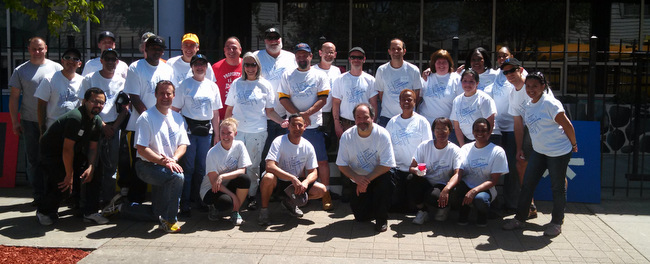For centuries, explorers looked to the stars to help them navigate new worlds. In Baltimore, stargazers aren’t using the night sky to track galaxies explore the Milky Way. Instead, the same modeling and algorithms used to map galaxies is being repurposed for a more pedestrian purpose: urban vacancies. Astrophysicists and city planners are working together to find new ways to manage abandoned buildings and future development. Patterns and Particles As part of an effort to help the city manage housing stock and anticipate residency trends, Baltimore recently partnered with John Hopkins University astrophysicist Tamás Budavári to find a way to detect patterns and predict which parts of the city will thrive, and which areas will end up empty and abandoned. According to Budavári, though astrophysics may have little in common with urban planning, at the core is a fundamental need to detect and detail patterns not readily apparent. “I thought: Can we measure this correlation of clustering of vacant houses the same way we made measurements about astronomy,” Budavári explains in a recent interview with Wired. Data and Diligence Last year, Baltimore Housing Commissioner Michael Braverman contacted Budavári about developing an algorithmic tool capable of predicting the city’s vacancies. Working through the John Hopkin’s Center for Government Excellence (GovEx), Budavári and Braverman are working together to find a proactive approach to the city’s urban planning. The key? Data. GovEx is a three-year program funded by Bloomberg Philanthropies. The goal of the organization involves aiding municipalities with the collection and analysis of data, so that “governments [can] effectively use data in order to make informed decisions on services that improve people’s lives.” The program also connects 120 partner municipalities across the country, helping each city manage data and share strategies. “We can take what we learn,...
Serving in Chicago
Urban Innovations
With a unique mixed portfolio and a passion for giving back to the community, Howard R. Conant Jr.’s Urban Innovations (UI) stands out in Chicago. The property management and construction services firm, established 35 years ago, manages 750,000 square feet of commercial property and 3,700 senior affordable housing units. UI’s construction division manages both affordable and commercial construction projects as well as third party projects. Since its origins as a founding developer of Chicago’s River North neighborhood, Urban Innovations has placed an emphasis on contributing to the greater Chicago community. This legacy of service is influenced by Mr. Conant’s personal history and business philosophy. He commented: “We live in a world where businesses wield tremendous power. From homelessness to education to healthcare to crime prevention to sustainability, addressing critical problems will require more resources than nonprofits and government can provide. We will solve these problems only when for-profit businesses make solving these problems a business enterprise. At Urban Innovations, we believe that doing good things for the community is very smart business.” Mr. Conant’s philosophy is demonstrated by the work he performs in the community. He currently serves on the boards of the Lawson House YMCA, Archeworks and Writers Theater, is an active supporter of Human Rights Watch, and participates in mission work with his church. He’s especially passionate about affordable housing and works alongside Urban Innovation employees during the company’s annual service days. Mr. Conant learned and embraced service and giving back to the community at an early age. Mr. Conant’s parents, Howard Sr. and Doris, incorporated advocacy and civic service into their own lives, and were noted supporters of Dr. Martin Luther King’s fight for civil rights in the 1960s. When Dr. King marched in Alabama, young Howard missed school to participate with his mother. He describes the day as a pivotal moment in his life. “That instilled a lifelong commitment, for him, of giving back,” explained Jo Anne Gottfried, Vice President, Marketing, for Urban Innovations. Howard Conant Sr. passed away in 2011. Doris Conant continues her work as a Chicago philanthropist through the Conant Family Foundation. Her passion for fighting back against poverty and homelessness, especially among mothers and children, was a major motivator behind Urban Innovations’ development work in River North. “She recognized that this was an area of town that needed to be rejuvenated. That was a conscious decision on her part,” Ms. Gottfried said. Fast forward 35 years, and River North is no longer a dangerous part of town behind the Chicago Merchandise Mart. Instead, it’s a vital and coveted walkable urban neighborhood, with restaurants, bars, art galleries, loft and apartment living, as well as commercial buildings. The bulk of Urban Innovations’ commercial portfolio is located within this area, and the company maintains an active role in the River North Business Association, which promotes local businesses and sponsors events. Demonstrating UI’s commitment to service, each year, Urban Innovations participates in numerous community service opportunities that bring together their Chicago-based employee team. “This is a group of people that is really willing to pitch in. There is no job too big or too small for anybody on our team,” Ms. Gottfried said. Through the Chicago Cares Business Shares Project, Urban Innovations completes an annual project that involves manual labor on behalf of a school or other public service facility. With the participation of employees from the company’s construction division, real renovation work can be completed even in just one day. And, there’s a job for everyone, whether it is building a planter box, painting a fence or participating in less strenuous tasks. “They do a really good job of keeping everybody involved. The upside for the company is the president standing next to the building engineer using the same paint bucket. That’s an opportunity you just don’t get all the time, and a conversation you don’t have all the time. It’s a good equalizer,”...


